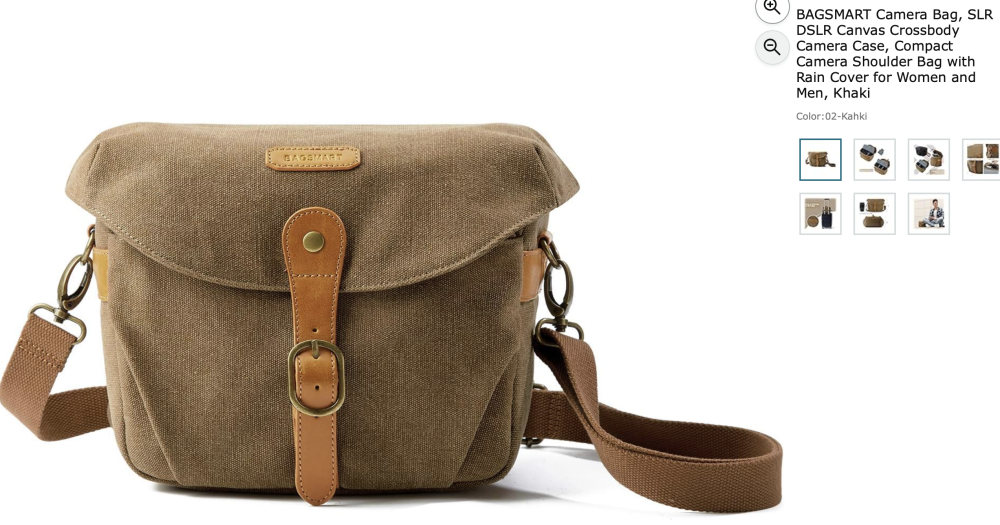I’m heading out on Namibia trip in a couple of weeks. We have been told that our duffels and carryons, specifically stating “and camera equipment “, must not weigh more than 44 pounds. Said that there is no extra charge if overweight, they’re just going to leave it off the plane. I don’t know how strict they are but that is what has been conveyed in final docs and letter of welcome from tour director.
MS78, this is a terrific tour, and I hope you love it as much as we did. The weight limit should be taken very seriously. It is a safety issue for the bush planes. Our TD told us that she witnessed a co-pilot having to deplane because they needed to balance the weight on one of the internal flights.
@AlanS I think you were trying to describe weight shifting and the possible results. This video does a pretty good job of illustrating it. https://www.youtube.com/watch?v=f_TfNAjMI0I
If you have a competent aircraft loader, whether they weigh you or do a visual weight estimate, they will know how much to allow. I am a big guy (6'5", proportional weight), I will always sit at or near the c/g of a small airplane. Flight crews know this and adjust accordingly.
Sandy- I definitely took them seriously. When I submitted weight, I include with shoes and jacket. My nephew, who I am taking, added 10pounds because he fully intends to put on that weight by eating on the trip.. we leave in three weeks and I’m so excited.
MS78, I love trip anticipation! The food on a Tauck tour is always tasty and plentiful. Your nephew has the right attitude 🥳 Bon appetit even if you are going to Africa and not Europe!
Thank you very much. I am checking out D7200 now with Tamara 18-400 now. The extra weight is a factor. Seems it would be a little over 3 pounds but seems the sensor makes the photos much better quality. With so many comments it is challenging and I leave on the 10 th of August. I do want quality but may need fast pictures. I will read further. Again, thanks.
@travelhj I have used a Lowepro Pro Tactic 450AW with two full frame bodies and three lenses on two trips to Africa and one trip to India and Nepal with no issues on any international, internal or bush plane flights. Hope that helps
Just returned from Tauck's Mountain Gorilla Safari: Kenya, Tanzania & Rwanda. I carried a light back pack and a separate camera case for my Canon DSLR with a 70-300 lens on this trip, and did not have any problems.
Comments
Dog doctor, great insight. Thanks.
I’m heading out on Namibia trip in a couple of weeks. We have been told that our duffels and carryons, specifically stating “and camera equipment “, must not weigh more than 44 pounds. Said that there is no extra charge if overweight, they’re just going to leave it off the plane. I don’t know how strict they are but that is what has been conveyed in final docs and letter of welcome from tour director.
Such a short trip is easy to achieve. We were there fro three weeks and our bags did not weigh that much.
MS78, this is a terrific tour, and I hope you love it as much as we did. The weight limit should be taken very seriously. It is a safety issue for the bush planes. Our TD told us that she witnessed a co-pilot having to deplane because they needed to balance the weight on one of the internal flights.
@AlanS I think you were trying to describe weight shifting and the possible results. This video does a pretty good job of illustrating it. https://www.youtube.com/watch?v=f_TfNAjMI0I
https://www.youtube.com/watch?v=f_TfNAjMI0I
If you have a competent aircraft loader, whether they weigh you or do a visual weight estimate, they will know how much to allow. I am a big guy (6'5", proportional weight), I will always sit at or near the c/g of a small airplane. Flight crews know this and adjust accordingly.
Sandy- I definitely took them seriously. When I submitted weight, I include with shoes and jacket. My nephew, who I am taking, added 10pounds because he fully intends to put on that weight by eating on the trip.. we leave in three weeks and I’m so excited.
MS78, I love trip anticipation! The food on a Tauck tour is always tasty and plentiful. Your nephew has the right attitude 🥳 Bon appetit even if you are going to Africa and not Europe!
Thank you very much. I am checking out D7200 now with Tamara 18-400 now. The extra weight is a factor. Seems it would be a little over 3 pounds but seems the sensor makes the photos much better quality. With so many comments it is challenging and I leave on the 10 th of August. I do want quality but may need fast pictures. I will read further. Again, thanks.
Has anyone had recent issues carrying a Lowepro camera backpack on the internal Kenya Tanzania flights?
@travelhj I have used a Lowepro Pro Tactic 450AW with two full frame bodies and three lenses on two trips to Africa and one trip to India and Nepal with no issues on any international, internal or bush plane flights. Hope that helps
Just returned from Tauck's Mountain Gorilla Safari: Kenya, Tanzania & Rwanda. I carried a light back pack and a separate camera case for my Canon DSLR with a 70-300 lens on this trip, and did not have any problems.